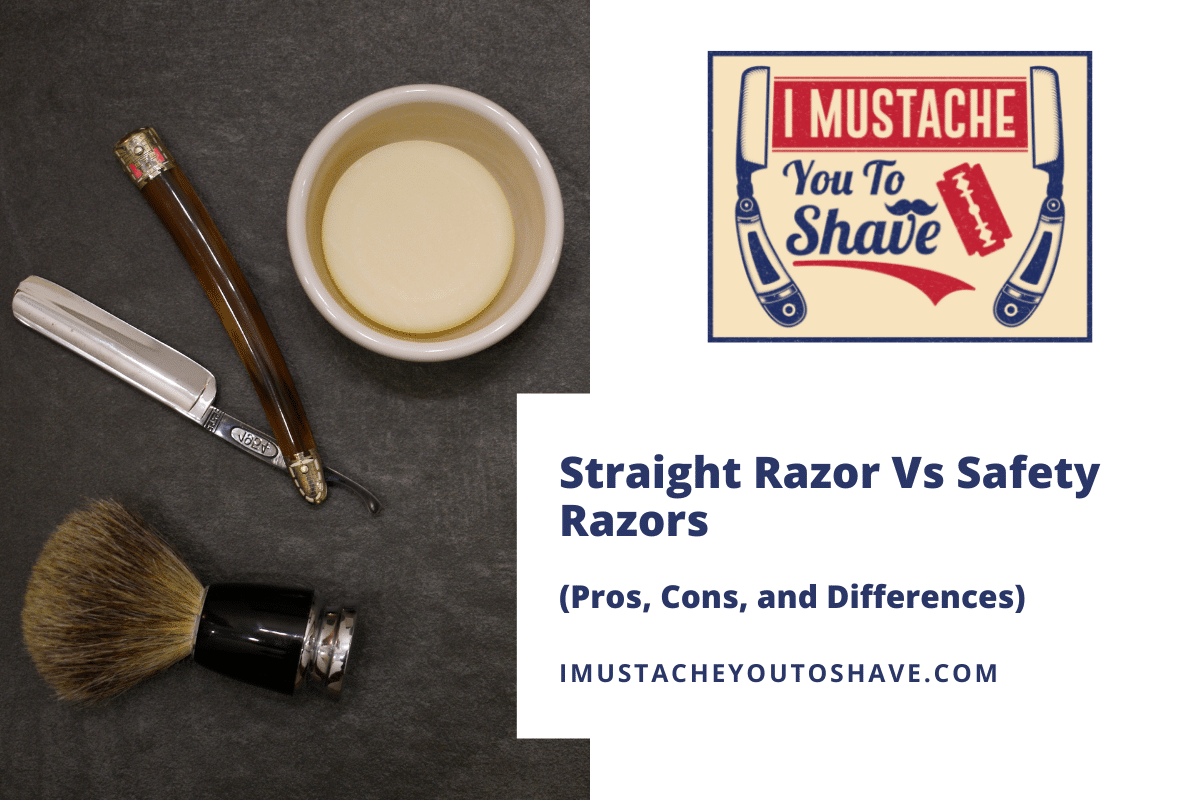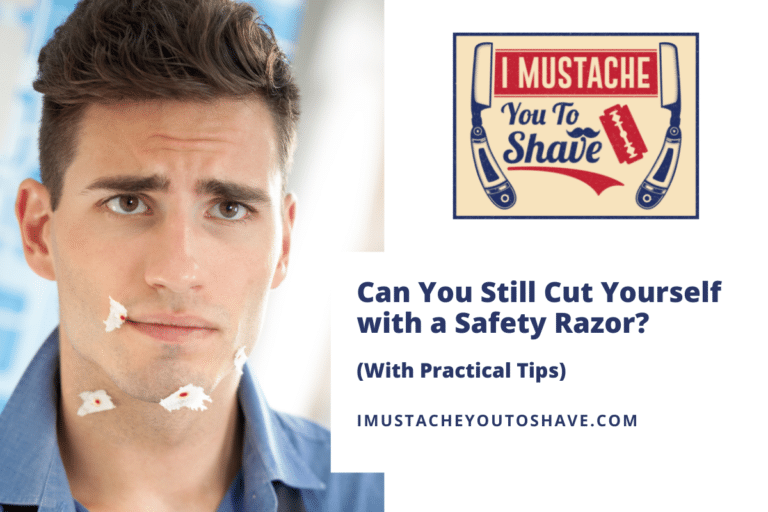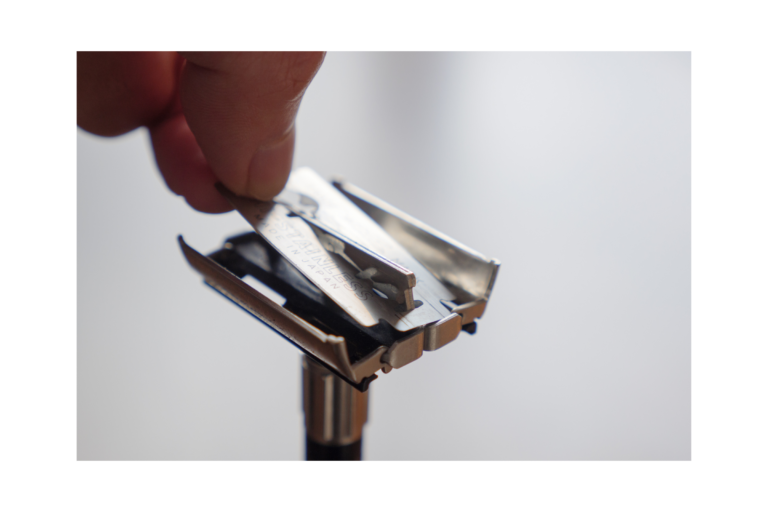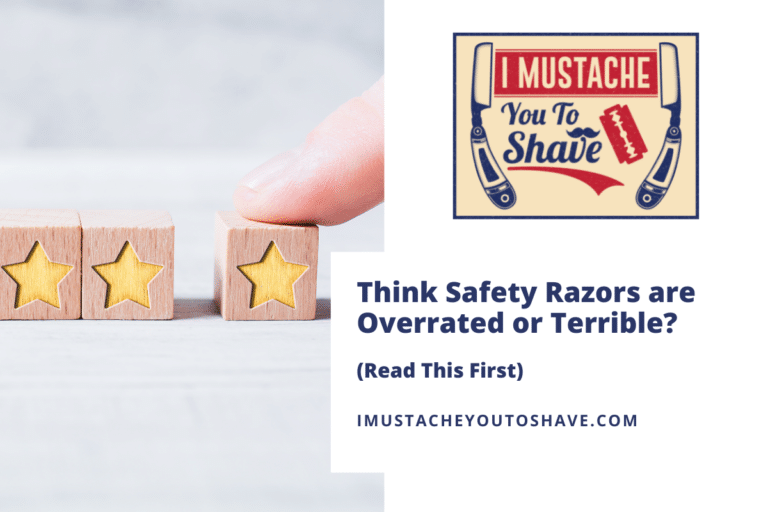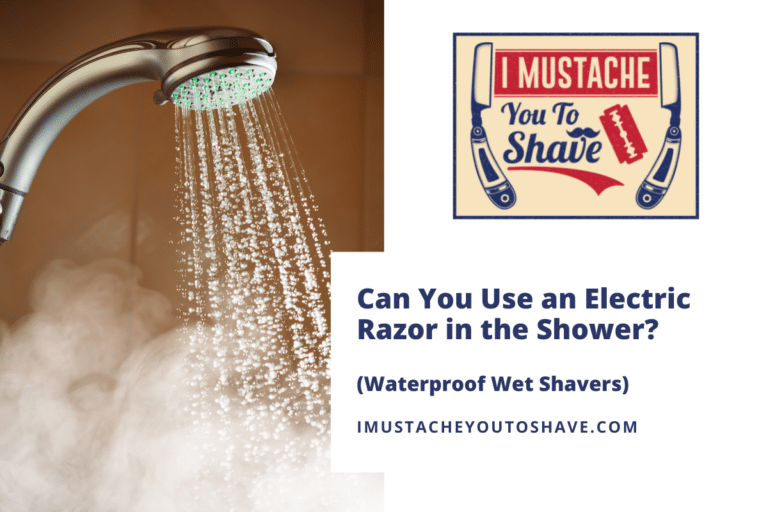Straight Razor Vs Safety Razors (Pros, Cons, and Differences)
Straight razors and safety razors replaced more archaic shaving tools like sharks’ teeth and tweezers. Which one is the better choice?
Choosing between a straight razor and a safety razor is based on numerous factors. Differences between the two types of razors can be seen when looking at design aspects such as blade, handle, and materials. Upfront price, long-term value, and the learning curve also factor into a shaver’s decision-making when choosing one of these razors.
Let’s discuss the differences between straight razors and safety razors and summarize with a list of pros and cons.
Differences between a straight razor and a safety razor
The average human male grows 25,000 hairs on his face over a 24 hour period. These hairs grow half a millimeter every day. Many shaving tools can remove this hair growth. Let’s take a close look at the differences between straight razors and safety razors.
Straight razors and safety razors exhibit differences in respect to the blade and handle design, materials, price, value, and the learning curve involved. Overall, a safety razor is easier to use than a straight razor while still offering a comparable shave.
Straight razors have been around for centuries. They are considered an “old-fashioned” or traditional way to shave. Straight razor use requires a lot of control and is considered ultra-masculine. Remember the James Bond straight razor scene in Skyfall?
Safety razor use has been popular since the early 1900s. These razors provide a shave much like the straight razor but are easier to maintain. Safety razor use really took off during WW1 when soldiers were issued safety razor shaving kits to keep their grooming up to military standards.
The popularity of each type of razor has ebbed and flowed through the years. While straight razors and safety razors both provide a quality shave, here are some of the reasons why shavers might choose one over the other:
- Blade
- Handle
- Materials
- Price
- Value
- Learning curve
Do you have a favorite razor? Let’s look at the specific differences between the straight razor and the safety razor and see if one edges out the other.
Blade
The blade is the most important part of any razor since the goal is a close shave. How do the blades on a straight razor and safety razor compare?
The biggest difference between a straight razor blade and a safety razor blade is the fact that safety razor blades can have two cutting edges as opposed to only one.
The single blade of a straight razor is long, thin, and made from strong metals like stainless steel, carbon steel, or Damascus steel. Blade sizes typically range from ⅝ to 8/8 inches in width from spine to cutting blade. The blade is connected to the handle with a pivot pin.
The straight razor blade has four distinct parts: toe, heel, spine, and cutting blade. The toe most commonly comes in square, round, or barbers’ notch shapes. The cutting edge of the blade can be completely straight or have a slight curve called a “smile”.
To keep the straight razor blade in tip-top cutting condition, the blade should be stropped on a leather strop between each shave. Several times a year, the blade should also be honed. If the blades are kept in prime condition, many men claim to be able to go longer between shaves.
Safety razor blades come in single-edge or double-edge versions. The single-edge is the oldest type of safety razor blade. Today, the double-edge blade is more common because it provides twice as many shaves before replacement.
When compared to the straight razor blade, safety blades are shorter in length. They look more like a typical razor blade. The blades can be changed out easily to keep them sharp and cutting effectively.
Handle
Both straight razor and safety razor handles can be made out of metals or other animal or natural elements. The main differences lie in the function and appearance of the handle.
A straight razor handle is different than a safety razor handle since it houses the blade while the razor isn’t in use. A safety razor handle often contains a twist mechanism that releases the blade and adjusts the spacing between the safety bar and the blade.
Straight razor handles, or scales, resemble pocket knife handles while safety razor handles are similar to the “hoe” design we associate with common cartridge razors.
Materials
Both straight razors and safety razors are made out of durable materials like metals and animal products. They can last a lifetime if well maintained.
Straight razors are different than safety razors because the straight razor blade is reusable over the razor’s lifetime. Safety razor blades should be replaced after a few shaves.
Straight razors have different grinds that affect the blade’s thickness, flexibility, and stiffness. The most popular grind is the hollow grind.
Safety razor replacement blades are made of metal sheets that are often coated with special materials to prevent corrosion.
Fun Fact: Jean-Jacques Perret invented the first primitive safety razor. It was a wood guard attached to a straight razor. They weren’t mass-marketed until King C. Gillette & William Nickerson perfected the design in 1903.
Price
As with most grooming products, there can be a wide range in straight razor and safety razor prices. Shavers can find both straight razors and safety razors ranging in price from $10 to hundreds of dollars.
Straight razors are more expensive than safety razors due to the extra costs of stropping and honing to keep the blade in perfect condition.
Straight razor users must purchase a leather strop and honing stone. These kits can run $25-$50. If you choose the professional honing route, it can cost $15-$20 per visit.
You’ve heard the saying “time is money”, so you must factor in maintenance time into the upfront price too. Stropping should be done between every shave. This process keeps the edge of the razor aligned to reduce pulling and tugging during the shave. Honing should be done a few times a year to keep the blade’s sharpness intact.
For more information on the topic, check out my guide to stropping, honing, and sharpening a straight razor.
Fun Fact: The most expensive razor ever marketed was the $100,000 2011 Zaffiro Iridium. Its double blades were crafted out of sapphire and the handle was 99.9 pure iridium. This rare platinum metal is only found in meteorites.
Value
Both types of razors provide long-term value to the user. Since a superior shave is at the top of a shaver’s list though, there’s a clear forerunner when looking at overall value.
Straight razors edge out safety razors in value due to the fact that the quality of shave is so precise that many shavers can skip a day between shaves. Straight razors also go one step further by providing a smoother shave on the neck area than a safety razor does thus eliminating razor burn.
Both straight razors and safety razors also add value to the environment since they are made to be reused and recycled.
Learning Curve
Perhaps the deciding factor between straight razor and safety razor use is the learning curve.
Straight razors are different from safety razors because they do not have a safety bar or shield protecting the shaver from the blade but both will require proper shaving angle and technique to get a close, clean shave.
Straight razors are often referred to as “cutthroat” razors. The blades are super sharp and there is no guard to protect against cuts. Straight razor shaving requires a special technique.
The correct straight razor technique requires concentration, patience, and ample time. Perfecting the pressure, angle, and contours of your face using this type of razor ensures you are in the moment at all times. A straight razor would not be the ideal choice if you are running late for work.
The preciseness of the cutting blade and edge of the straight razor make it an ideal instrument to do the detail shaping around beard, goatee, and mustache edges.
On the other hand, safety razors do offer some protection against nicks and cuts due to the guard component. While they still require some adjustments in regard to pressure and angle, safety razors have a smaller learning curve overall. They can be mastered in a shorter time frame and are more forgiving for beginners. The tradeoff is less precise cutting around beards and mustaches.
Are straight razors better than safety razors?
The safety razor market was recently estimated at $2 billion annually, with the straight razor market being only a fraction of that.
Based on the many differences between straight razors and safety razors, which type is better? While the choice is mostly subjective, a look at the pros and cons can help to further guide your final choice.
Pros of straight razors
- Unrivaled close shave
- James Bond masculine appeal
- Produces sharp detail work
- Less neck irritation
- Environmentally-friendly
Cons of straight razors
- Requires regular maintenance
- Takes time to master
- Potential to cut while learning
Pros of safety razors
- Shorter learning curve
- Less maintenance
- Guard to protect against cuts
- Environmentally-friendly
Cons of safety razors
- Must shave more often
- Must purchase and replace blades regularly
- Harder to shave the neck area
- Lacks the control for detail work

